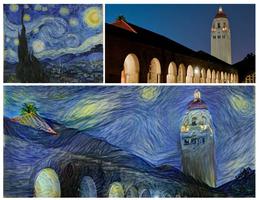Python3.4+Django1.9+Bootstrap3

实现和原理
Python集成Django开发框架后,可以通过在cmd命令提示符下建立工程,工程名为learn_models
django-admin.py startproject learn_models
再进入到learn_models里面,新建一个app项目
cd learn_modelspython manage.py startapp learn
此时目录的结构有这些文件
C:\USERS\SHILEIDING\LEARN_MODELS│ manage.py
│
├─learn
│ │ admin.py
│ │ models.py
│ │ tests.py
│ │ views.py
│ │ __init__.py
│ │
│ └─migrations
│ __init__.py
│
└─learn_models
settings.py
settings.pyc
urls.py
wsgi.py
__init__.py
__init__.pyc
再去官网下载最新的Bootstrap3框架文件 http://getbootstrap.com/getting-started/#download 下载的文件夹可以看出有css、fonts、js三个(功能相当大),这就是Bootstrap 3的全部,以下就要在刚新建的Django工程集合Bootstrap3,进入learn_models目录,新建一个static文件夹,再在static里面新建一个bootstrap文件夹,将下载的三个文件夹放进去。
回到learn_models目录,进入learn目录里,新建一templates文件夹,里面存放Bootstrap的html界面,如此处新建一文件test.html,要引用Bootstrap 和jQuery等相关库,这里重点是定位存放的static文件
<!DOCTYPE html>{% load staticfiles %}
<html>
<head lang="en">
<meta charset="UTF-8">
<!-- 引入jQuery -->
<script src="http://apps.bdimg.com/libs/jqueryui/1.10.4/jquery-ui.min.js"></script>
<script src="http://code.jquery.com/jquery-latest.js"></script>
<!-- 引入 Bootstrap -->
<link href="{% static 'bootstrap/css/bootstrap.min.css' %}" rel="stylesheet" type="text/css">
<link href="{% static 'bootstrap/css/bootstrap.css' %}" rel="stylesheet" type="text/css">
<script type="text/javascript" src="{% static 'bootstrap/js/bootstrap.min.js' %}"></script>
<script type="text/javascript" src="{% static 'bootstrap/js/bootstrap.js' %}"></script>
<!--[if lt IE 9]>
<script src="https://oss.maxcdn.com/libs/html5shiv/3.7.0/html5shiv.js"></script>
<script src="https://oss.maxcdn.com/libs/respond.js/1.3.0/respond.min.js"></script>
<![endif]-->
<title>数据展示平台</title>
</head>
<body>
<!-- bootstrap 特性容器 -->
<div class="container">
<h1>Hello, world! </h1>
</div>
</body>
</html>
文件开头的 {% load staticfiles %}就是加载static目录,为了找到static目录,需要稍微修改下".../learn_models/learn_models/settings.py"中的配置,主要有两块修改
INSTALLED_APPS = ('django.contrib.admin',
'django.contrib.auth',
'django.contrib.contenttypes',
'django.contrib.sessions',
'django.contrib.messages',
'django.contrib.staticfiles',
#注册新建的app
'learn',
)
INSTALLED_APPS中添加新建的app,然后配置static相关
STATIC_URL = '/static/'STATICFILES_DIRS = (
os.path.join(BASE_DIR, 'static'),
)
将static目录放在 STATICFILES_DIRS 中,这样就可以load到我们刚下载的bootstrap 了,bootstrap依赖于jQuery库,所以一定要添加,我们这里是直接引用的,如果有下载版本只需放在static里再引用就行。
这时前端html已经可以使用相关bootstrap属性了,但如何通过Django 的http协议访问呢?这就是Django传奇的MVC模型了,刚刚的templates文件夹就是表现层,展示给用户看的前端,views.py负责处理业务逻辑层,处理请求和返回请求,models.py负责数据存取层,处理数据库的相关属性。前端发出的GET或POST请求要通过urls.py映射到views的相关方法中,所以要在urls.py中配置映射关系,这里假设请求路径为 http://127.0.0.1:8000/test/ 则配置为
urlpatterns = [url(r'^admin/', include(admin.site.urls)),
#前面是正则表达式
url(r'^test/','learn.views.test',name='test'),
]
映射到对应的views.py中,这里简单实现test方法,在views.py中添加即可
#Bootstrap 测试def test(request):
return render(request, 'test.html')
当浏览器发出test请求后,先通过urls映射到views中的test方法,处理逻辑后推到前端test.html中显示,html显示的内容可以利用下载的bootstrap渲染。
运行
在cmd中cd到 learn_models目录下 ,此时的目录结构如下
C:\USERS\SHILEIDING\LEARN_MODELS│ manage.py
│
├─learn
│ │ admin.py
│ │ models.py
│ │ tests.py
│ │ views.py
│ │ __init__.py
│ │
│ ├─migrations
│ │ __init__.py
│ │
│ └─templates
│ test.html
│
├─learn_models
│ settings.py
│ settings.pyc
│ urls.py
│ wsgi.py
│ __init__.py
│ __init__.pyc
│
└─static
└─bootstrap
├─css
│ bootstrap-theme.css
│ bootstrap-theme.css.map
│ bootstrap-theme.min.css
│ bootstrap.css
│ bootstrap.css.map
│ bootstrap.min.css
│
├─fonts
│ glyphicons-halflings-regular.eot
│ glyphicons-halflings-regular.svg
│ glyphicons-halflings-regular.ttf
│ glyphicons-halflings-regular.woff
│ glyphicons-halflings-regular.woff2
│
└─js
bootstrap.js
bootstrap.min.js
npm.js
可以看到有manage.py,这正是运行的管理器,先同步数据库,然后运行工程
#同步数据库python manage.py makemigrations
python manage.py migrate
#运行工程
python manage.py runserver
然后打开 http://127.0.0.1:8000/test/ 出现在偏中间的hello world 表明整合成功
以上是 Python3.4+Django1.9+Bootstrap3 的全部内容, 来源链接: utcz.com/z/388795.html



